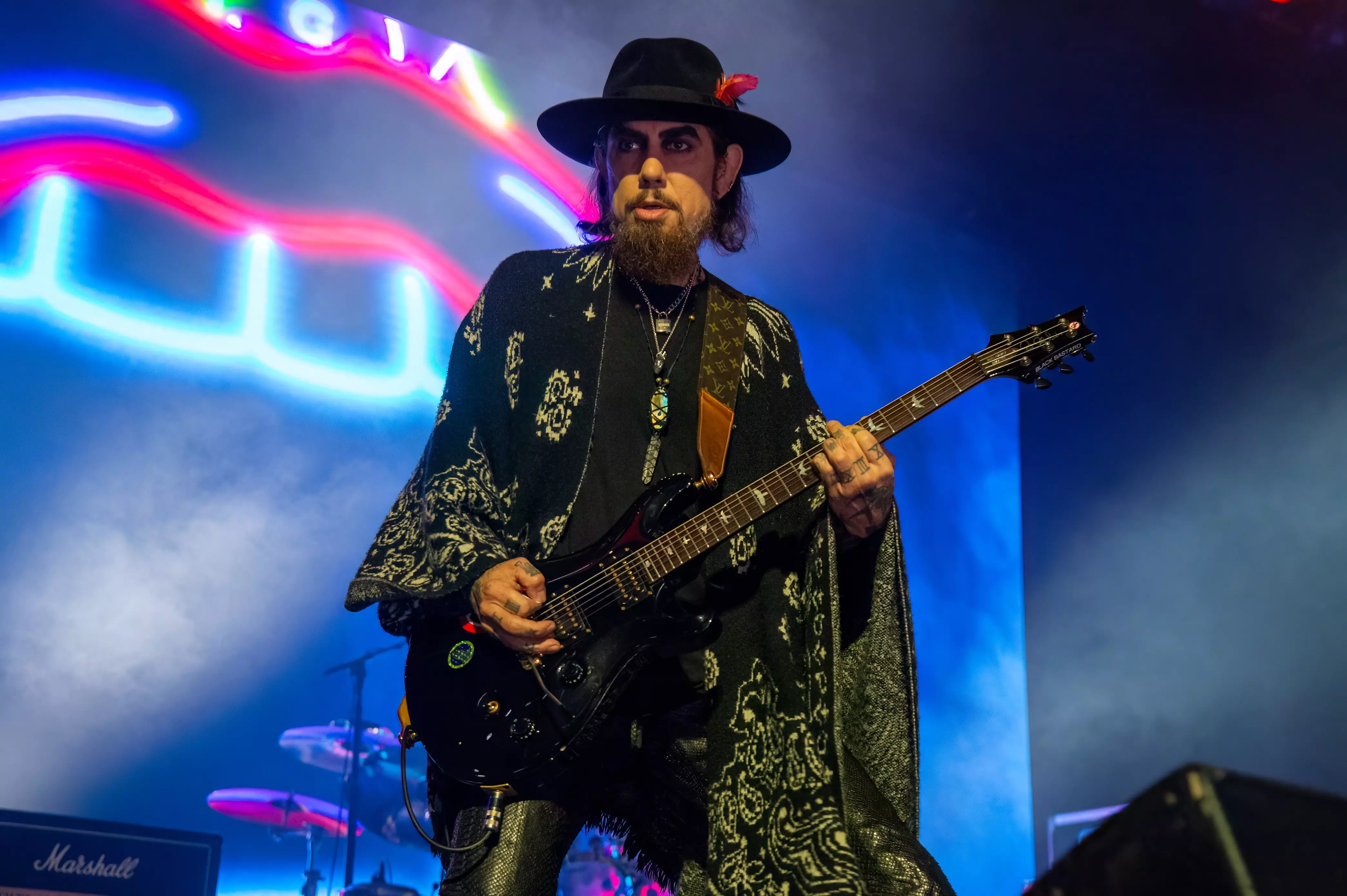Photo: Ilya S. Savenok/Getty Images for Twitch
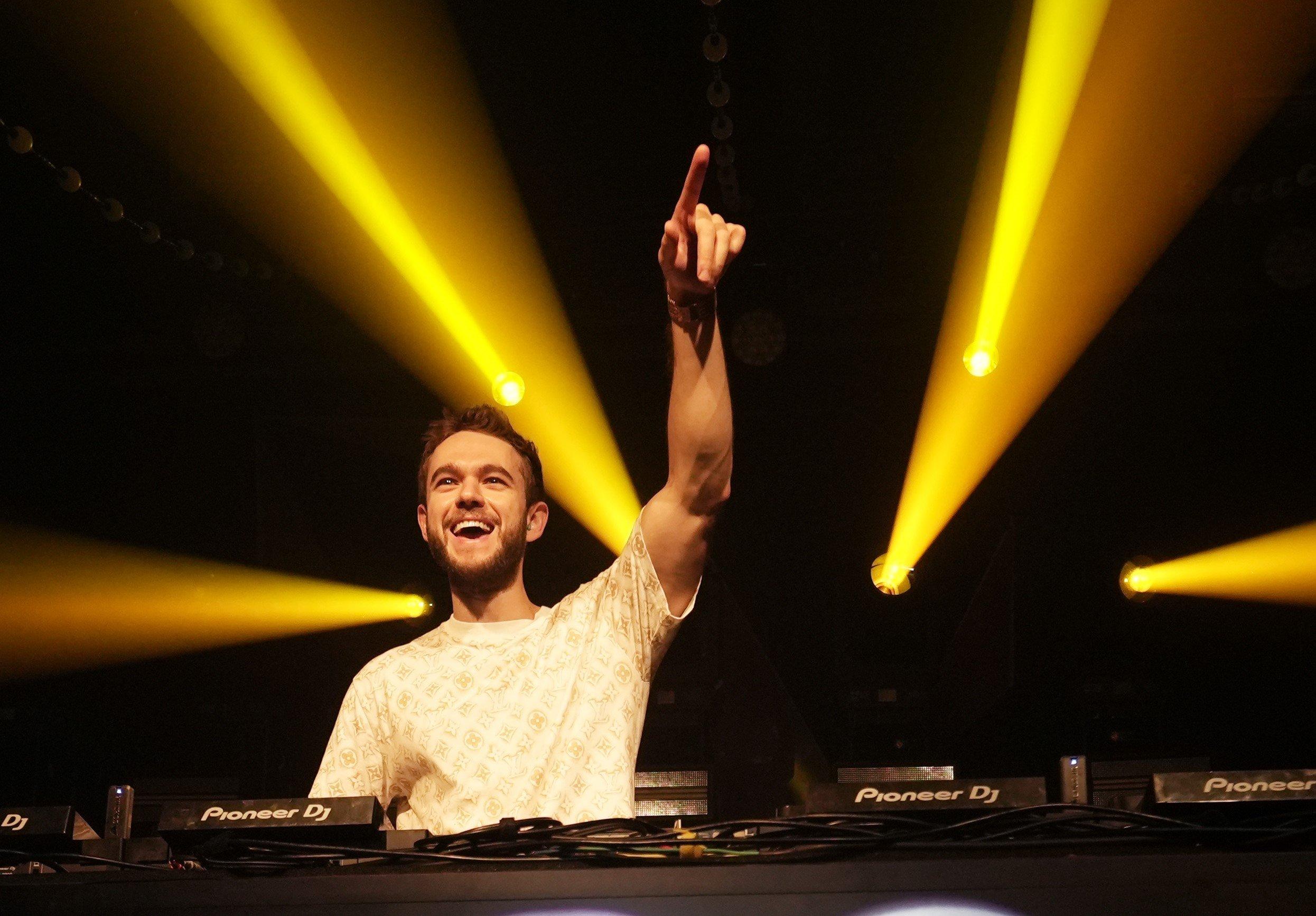
feature
Zedd's Road To 'Telos': How Creating For Himself & Disregarding Commercial Appeal Led To An Evolutionary New Album
'Telos' "isn't going to be that pop album that some people may have wanted me to make," Zedd tells GRAMMY.com of his highly anticipated album — his first in nine years.
At the time of our call, the release of Telos — Zedd's first studio album in nearly a decade — is just seven days away. Snug in an earthy brown crewneck, the 34-year-old musician joins the Zoom from his new home in Encino, California, with a degree of poise that some might find surprising at this point in the rollout.
Still, his relaxed body language, decisive, measured speech, and quiet confidence make it clear that any anxiety he once felt about the LP has been replaced by pure anticipation.
"I am honestly just really excited. I think I've released music in the past that I was nervous about, but it's quite different with this album," he tells GRAMMY.com. "I feel very calm and just happy to be able to release this music that I've been working on for so long, some of which has been in the works as late as nine years ago."
Out Aug. 30, Telos arrives about four years later than initially announced and about eight years after it was contractually due. Though Zedd confirmed that the long-awaited answer to his second studio album, True Colors (2015), would arrive in 2020, he indefinitely postponed the project at the height of the COVID-19 pandemic.
"I decided to push back the album to when things are more back to normal," he wrote in a Reddit AMA (ask me anything) in November 2020. "I really wanted it to come out this year, but I put the album on standby because during quarantine, I just didn't feel the inspiration to make this the best album possible."
Timing is everything and Zedd, who counts a clock ticking sample among his stylistic hallmarks, knows this well. Zedd embraced the axiom while making Telos, an album that "isn't for the algorithms" in an era when creative works' cultural capital is largely decided by how well they pander to an algorithm. Telos is decidedly — and in some ways, daringly — non-commercial. "Lucky," alongside singer/songwriter Remi Wolf and "Automatic Yes" with John Mayer, are notably the only two tracks palatable for commercial radio airplay. The 10-track album largely plays like a love letter to classical music (there is an orchestra on the entire LP), with flashes of pop, dance/electronic, jazz, world music, and metal influence. A cross-generational list of collaborators — including 40-year-old musician and composer Jeremy Kittle, who recorded each string for the album one by one, and Gen Z singer-songwriter Bea Miller — further dynamize Telos.
Telos "isn't going to be that pop album that some people may have wanted me to make," Zedd acknowledges. Nor will it be the dance/electronic LP that purists from his name-making run in the early-2010’s might long for. Fans gained during the GRAMMY-winning producer's complextro, electro, and progressive house-heavy era (think "Shave It") have been some of his most outspoken critics in recent years, reproaching his stride into commercial pop.
This response is neither surprising nor foreign to Zedd. "I felt the same way about a lot of bands and artists that I grew up listening to when I heard their new music," he reflects. "In the moment, you might be like, I'm disappointed, 'cause I wanted X, Y, Z, and with a little bit of perspective, you realize what an artist has done, and maybe those become your favorite works when you give it time."
Zedd has already proved his ability to craft pop hits with staying power — with help from some of the genre’s most prominent voices. The 2017 single "Stay" with Alessia Cara (2017) and 2018's "The Middle" with Maren Morris and Grey were two of Zedd's biggest smashes in the dance-pop domain post-True Colors. Both singles achieved platinum certification, though "The Middle" has since struck platinum six times. Like "Clarity" — the 2012 breakthrough single that scored Zedd his sole golden gramophone (for Best Dance Recording) — "Stay" and "The Middle" imbued him with the confidence and greater depth of reference to make an album like Telos.
"If I made another album today that felt the same way Clarity felt back then, you wouldn't feel the same way about Clarity today," Zedd reasons, adding that Telos has some of the "internal motivations" and experimentation of Clarity. "It's just a more mature and experienced expression, so I think the people who loved Clarity will find plenty to love on Telos."
The album's debut single, "Out Of Time" featuring Bea Miller, is likely to serve as one such point of connection. It retains the DNA of Zedd's established, melody-driven sonic identity while still feeling fresh and exploratory.
"It's a really good example of a new version of an old me," he attests. "The real core of what Zedd feels like isn't the sound. It's not the synths, and it's not the kicks you hear at the festival. It's actually really deeply rooted in chord progressions and melodies. Those are well alive, and more than ever, on Telos."
At nine-and-a-half-years-old, "Out Of Time" is the oldest track on the album, penned just after Zedd delivered True Colors (OG fans will recognize the song's chord progression from the intro to his DJ sets). His motivation to repeatedly rework the track and fashion it into the album opener stems, in part, from the feeling that it was "too theatrical" to be a standalone single.
Telos provided "the perfect canvas to deliver all these meaningful songs to my life and to my career that couldn't just be one-offs," he says.
Zedd’s current musical ethos is born from his disenchantment with the direction of music in the age of algorithms and TikTok, and the resulting Telos is the product of his "decision to really be free musically."
"There was one moment in making Telos that made me realize this is like my autobiography. This is everything I am as an artist, and everything I do musically is for me," Zedd says with conviction. "That was a really liberating moment because I am essentially guaranteeing that I'm not going to disappoint anyone because the only audience is me. I'm making this for myself."
"It sounds so silly to even say [this album is just going to be for me] because you would think that everything you make as an artist is for you," he concedes. "But really, the truth is it's hard to block out the feeling that people might be disappointed, and the feeling that you could change a song, and you would make so many people happy."
Telos' exhaustive creation process was as much a matter of deconstruction as it was reconstruction. About halfway through the first version of "Z3," as the album is known colloquially among fans, Zedd scrapped 90 percent of what he'd written, salvaging only "Dream Brother." The hypnotic interpretation of Jeff Buckley's 1994 song embodies the musicality that threads Telos — from the texture of the opening guitar chords and piano, to the swell of strings, and Zedd's signature clock ticking sample in its outro. Telos marks the first and only time the Buckley estate has given an artist the rights to the late creative's work.
"Dream Brother," Zedd explains, was "the only song that felt like this is living very much in the world that I really deeply feel," citing it as "a song that has inspired me since my early days as a musician."
Between his successes on Billboard's Hot Dance/Electronic Songs chart and the coveted Hot 100, it may be easy to forget that Zedd's musicality traces back to childhood. A classically trained musician, Zedd began playing the piano at the age of four and still writes his music on the piano first. Telos is a cerebral reminder that it's reductive to think of Zedd as anything less than a natural-born composer.
Elsewhere, "Sona," featuring the olllam, harkens back to Zedd's days as a member of German metalcore band DIORAMIC in its use of the 7/4 time signature. "Sona" is the first song in this time signature that Zedd has made since his days as a band member (he was the group's drummer from ages 12 to 20).
Still, Telos' unequivocal pièce de resistance is "1685" with GRAMMY-winning English rock band Muse. The six-minute and 11-second album finale takes inspiration from Johann Sebastian Bach's "The Well Tempered Clavier" — the first classical piece Zedd ever learned to play on piano as a child and as he calls it, "probably the most influential piece ever written in life for me."
Named for Bach's birth year, "1685" extends the full-circle nature of Telos. Both a tribute to his favorite composer and a reference to Zedd's earliest days as a musician (he performed a cover of Muse during his very first concert with DIORAMIC), these connections imbue Telos with authenticity and soul.
Intricate and lovingly-crafted, Telos is Zedd at his most musically honest. "It's my entire life in one album," he says. "It's truly an evolution of who I am as a musician."
His decision to eschew trends and commercial formulae to embrace "music for the sake of art" confers a sense of timelessness to Telos. For those versed in gaming terminology (like the multi-platinum producer, a notorious gamer) Telos is Zedd in his final form — a state unlocked only after the successful completion of considerable, skill-building challenges.
Fittingly, the multifaceted nature of Telos and its creator is reflected in the album's title. The Greek word has multiple meanings, including accomplishment, completion of human art, and the end. He chose the name "telos" 30 or so minutes before he had to submit the LP — an ironic timeline for a production that took years to conceive. Yet like all of the creative choices that culminate in Telos, this, too, was part of a thoughtful strategy. Zedd wanted to be sure that the album's title would faithfully capture its concept, even after the LP’s many metamorphoses.
"I really relate to all of the meanings," he says. "Accomplishment of a goal is one of them. I made this album that I was dreaming of making my whole life with the artists I love so much who have inspired me, so it's a genuine dream come true to make this album."
With introspection written on his face, Zedd pauses, then continues: "One of the meanings of 'telos' is the end, and there was a good chunk of time where I thought this might be the last music I will ever release. It's kind of like I put all my emotions and feelings into this one album…is there any reason for me to take space away in this universe if this is all I have left to say? And for a moment towards the tail end, I was like 'yeah, Telos is the name for this album because I will never make another song in my life.'"
But Telos is merely another beginning, briefly disguised as an end. Zedd delivered the album, had a second to breathe, moved from Beverly Hills to Encino, put a piano in his bedroom, and "inevitably started writing new music." Timing is everything.
More Dance & Electronic Music News

Zedd's Road To 'Telos': How Creating For Himself & Disregarding Commercial Appeal Led To An Evolutionary New Album
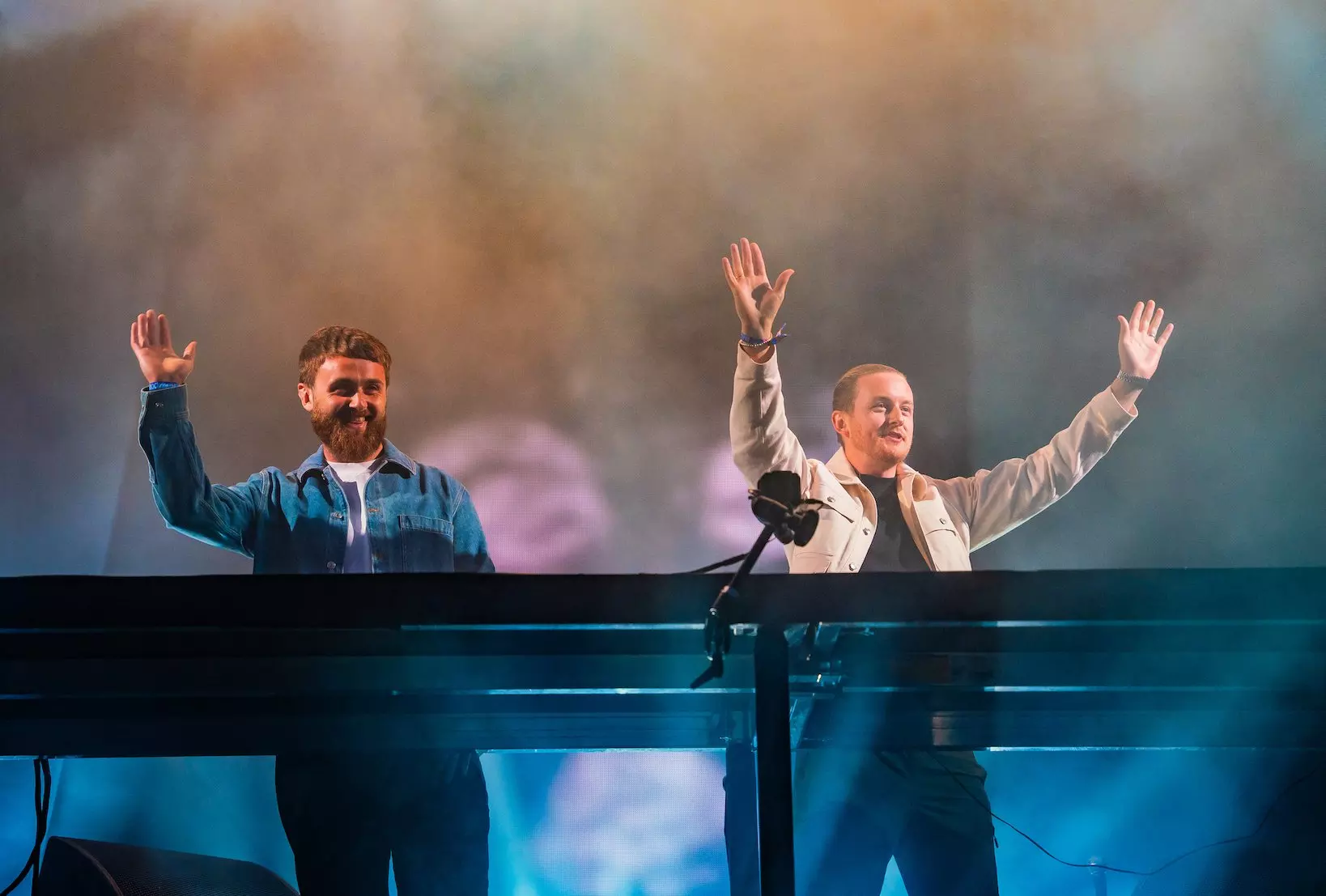
10 Cant-Miss Sets At HARD Summer 2024: Disclosure, Boys Noize, INVT & More
.webp)
Machinedrum's New Album '3FOR82' Taps Into The Spirit Of His Younger Years
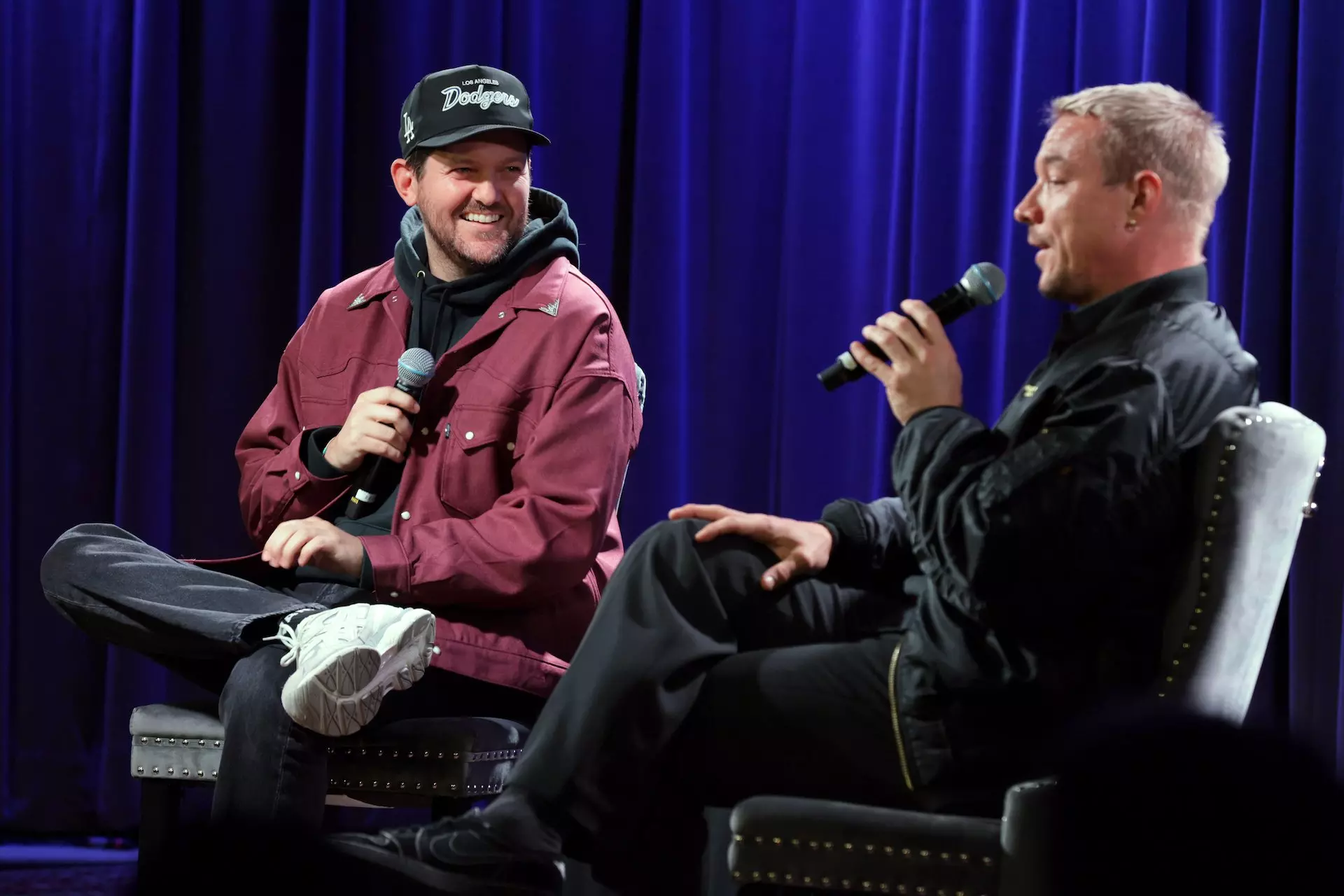
Dillon Francis & Diplo In Conversation: 5 Things We Learned From The GRAMMY Museum Event
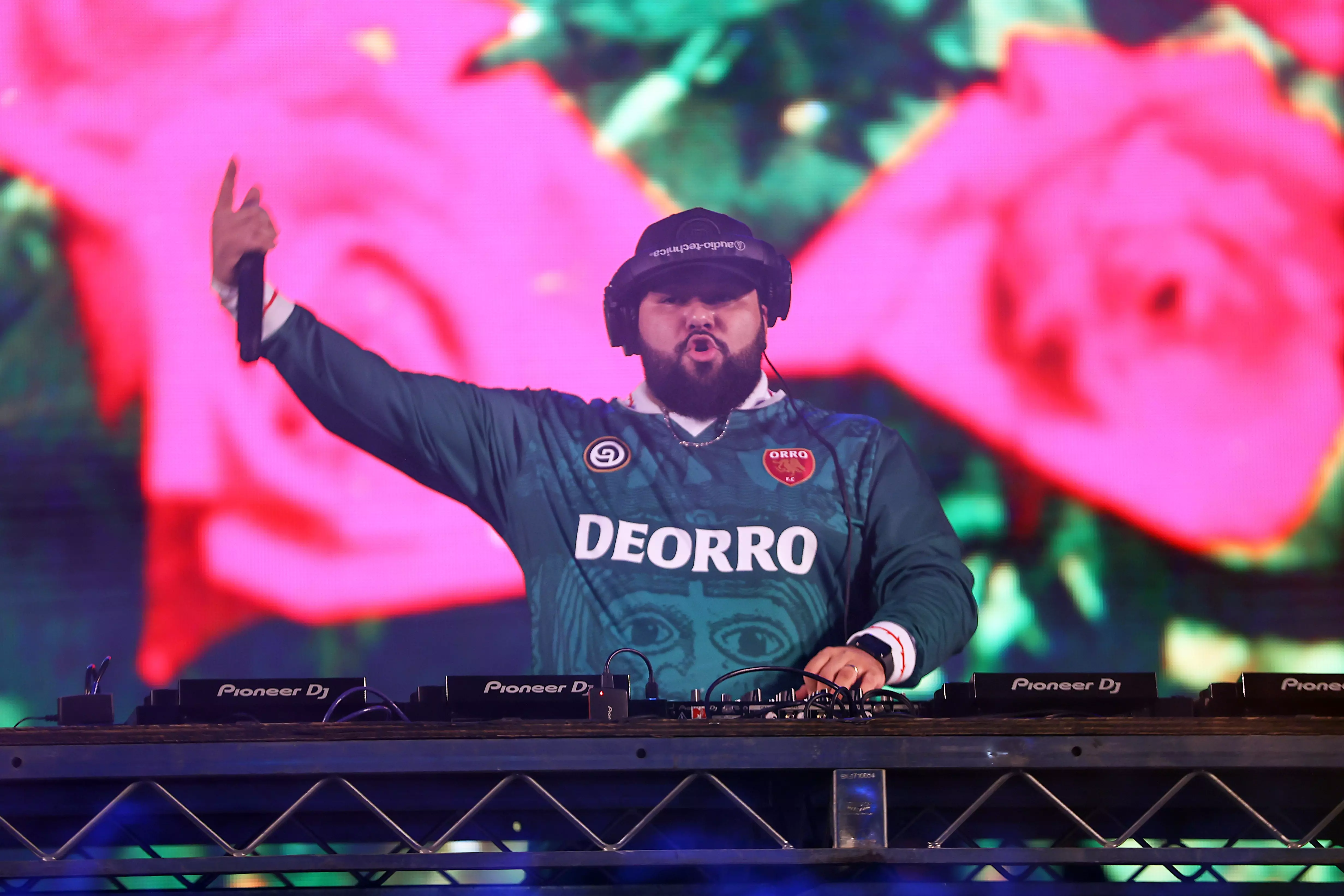
8 Essential Latin Electronic Releases: Songs And Albums From Bizarrap, Arca & More

Photo: Venla Shalin/Redferns
news
10 Cant-Miss Sets At HARD Summer 2024: Disclosure, Boys Noize, INVT & More
The L.A. festival is famous for bringing an array of electronic sounds, from dance-pop and experimental techno, to classic house and rare back-to-backs — and this year's lineup features some of the biggest and buzziest acts in dance music.
When it comes to American dance music culture, few events carry the cool cache of a HARD party. Founded on New Year's Eve of 2008 by DJ and former label A&R Gary Richards, the name HARD has become synonymous with taste-making, offering fans an enviable mix of influential headliners and cutting-edge up-and-comers.
HARD parties have been a breakout platform for luminaries like Justice, Skrillex, deadmau5, and more, and the HARD Summer festival is one of the brand's most celebrated flagship events. In 2017, HARD was absorbed into the Insomniac festival family — the same company that brings fan-favorites EDC Las Vegas and Electric Forest to life — which ensures the stage production, on-site activities and other ancillary fun are sure to be supersized. How many festivals do you know that offer a Ferris wheel and a swimming pool?
Coming to Los Angeles' Hollywood Park near SoFi Stadium on Aug. 3 and 4, this year's lineup continues the tradition of blending authoritative artists, legacy DJs and unique back-to-back headliners with buzzy newcomers in a variety of genres and styles.
Whether you wanna rave out with club king Jamie xx, bang your head to bass with Zeds Dead, get tropical with Major Lazer, see what it sounds like for UK grime star Skepta to DJ, or just sing along to mid-2000s belters courtesy of dance-pop crossover queen Nelly Furtado, there's something to please every palette. Of course, in true HARD tradition, we seriously recommend exploring the undercard, because the biggest name in electronic music tomorrow is probably playing one of the HARD side stages today.
While you wrap your head around the stacked lineup, check out a quick guide to 10 must-see acts below.
Boys Noize
A legend on the decks who can play blissful disco or teeth-shattering techno with a smile, Boys Noize is a must-see on any lineup simply because he loves doing the job. He recently teamed with Skrillex on the anthem "Fine Day," and released an entire EP with alt-rap icon Rico Nasty. He's also the producer behind Lady Gaga's beloved Ariana Grande collab, "Rain On Me," and Playboi Carti's "Unlock It," but he's likely to unleash a massive set of hard techno bangers for the L.A. crowd — though you never can tell which direction he'll take you in next, so come with an open mind.
Disclosure
As the top-billed headliner for Saturday night, Disclosure should need little to no introduction to any modern dance music fan — but that doesn't mean you should sleep on their set.
Howard and Guy Lawrence emerged on the scene as seemingly an instant success. The brothers' debut album, Settle, almost single-handedly changed the landscape of popular dance in 2012, moving the taste du jour away from the big-room EDM and bass-heavy trap sound toward a UK garage revival that still carries, and helped launch Sam Smith's career in the process.
In the 12 years that followed, Disclosure has continued to push the envelope — and themselves — working with cross-genre heavyweights including Lorde, Khalid, Miguel, Kelis, Slowthai, and The Weeknd, as well as incorporating international sounds and styles into their club-driven house grooves. Earlier this year, Disclosure returned with the dance floor-ready single "She's Gone, Dance On," announcing themselves as arbiters of disco-laced funk and good-time DJs for 2024 crowds. Surely they'll be in top form come HARD Summer.
INVT
If you like your dark techno to come with a side of hip-shaking Latin rhythms, Miami-bred duo INVT is the experimental sound machine you can't possibly pass up. Luca Medici and Delbert Perez have been best friends since they were kids, and that closeness comes through in their tight experimental sets, blending booming bass with glitched-out techno synths, cumbia rhythms, dembow beats, and acidic edge.
INVT are — as the name may imply — extremely innovative, leaning into their own productions and edits to curate an approach that feels hypnotic, exciting and unique. If you're not afraid of beats that go really hard and get a little weird, this is a set that can set your wild mind ablaze.
Rezzmau5
What happens when you put two of the most unique and hard-hitting producers in electronic music together on one stage? Deadmau5 is one of the scene's leading icons, and Rezz (who released her debut album of deadmau5's Mau5trap label in 2017) shifted bass music culture with her gritty, techno-fueled, half-time sound. The two share a love of dark, stomping, left-field noise, and after years of teasing possible collaborations, those shared interests merged on the 2021 collaboration "Hypnocurrency." Two years later, they released the booming, dystopian 2023 single "Infraliminal" — not just a brilliant rework of deadmau5's 2012 track "Superliminal," but the official introduction to Rezzmau5.
Rezzmau5 haven't released anything since, and live performances from the duo have remained few and far between. But the monolithic duo just warmed up their trippy joint live show at Tomorrowland 2024, which was set in "the mythical realm of Silvyra," a world "filled with creatures, plant life, and people living in harmony." Whether or not their HARD set follows the same storyline, it's certain to shake the skulls of every dancer at Hollywood Park. Prepare your body for something deep, dark and maniacal.
Elderbrook
There aren't many electronic acts that bring the same level of frontman energy that Elderbrook boasts on stage. A multi-talented performer, the UK artist sings and plays instruments, creating a rock-show experience unlike most sets at heavily electronic festivals like HARD. He leads the crowd in heartfelt sing-alongs to hits including "Numb," "Something About You," "Inner Light" and, of course, his megahit CamelPhat collab "Cola."
Bouncing between his microphone, synthesizers and keyboards, samplers and drum pads, his one-man band performance is sure to draw a serious crowd. If you're ready for a break from the hard-edged rave noise and want to ascend to heavenly heights, Elderbrook is the man for the job.
Fisher + Chris Lake (Under Construction)
Nothing is more fun than watching two best mates go absolutely nuts on the decks. And when two stellar DJs go back-to-back, everyone wins, because they spend the whole set trying to impress each other.
Chris Lake is one of the most influential producers in tech house. Fisher is one of the most unhinged and energizing DJs one can ever witness. Together, the besties deliver an over-the-top party with an arsenal of mind-numbing drops, weirdo grooves and just-plain fun vibes that make you wanna hug your friends and dance 'til you sweat. The set is called Under Construction, but make no mistake: these two have completely mastered the blueprint.
JYOTY
If you like your sets to be playful cross-genre explorations of sounds from around the world — tied together by booty-shaking beats and booming bass lines — JYOTY is sure to check all your boxes. She knows how to lead a great party because she spent her childhood frequenting the unmatched clubs of Amsterdam. And with an ethos built around playing whatever the heck she wants, she's comfortable dropping a bit of hip-hop into some Brazilian bops, mixing it up with hard breakbeats, blistering rave synths and more.
Kerri Chandler
If you don't know your history, you're doomed to repeat it, but no one brings the house down quite like Kerri Chandler. A pioneer of the original deep and garage house movements, Chandler was a foundational DJ of the '80s scene, holding down a residency at the legendary Club Zanzibar in New Jersey and founding the MadHouse Records label. If you want to feel the soulful spirit that made electronic music what it is, Chandler's dreamy mix of feel-good melodies served over kickin' club beats are a direct line to house music's roots.
Mary Droppinz
You know how Mary Poppins had a magical bag that held everything from a hat rack to an ornate mirror, a house plant and a Tiffany lamp? Well, California DJ Mary Droppinz comes equipped with a magical USB that's positively bursting with mean beats and original edts.
This woman can blend everything from grimy bouncing bass to ethereal orchestral house, Spice Girls reworks, drum'n'bass bangers, reggae upbeats, '90s R&B remixes and chart-topping hits of the moment twisted into face-melting heaters. You can try to guess where she'll go next, but it's better to just let her take control and follow the vibe through all the devious twists and turns. The one thing you can count on? You'll leave her set dripping with sweat.
Overmono
Disclosure aren't the only brilliant UK brothers on the HARD Summer lineup. Overmono's Tom and Ed Russell hail from Wales and make some of the most inspired club records of our time.
With backgrounds exploring hard techno, drum'n'bass and rave, the brothers combined their talents in 2015 and have since created an enviable blend of soulful atmospheres and frenetic breakbeats that feels nostalgic and sentimental, but still very heavy. Overmono's 2023 album Good Lies is a great play from start to finish, and a good way to get prepped for their critically acclaimed live set. If you need a big-name co-sign, Overmono was recently featured on Fred again..'s "Stayinit" with Lil Yachty on the vocal. That's the caliber they're rockin' with — and the prestige they'll bring to HARD Summer.
Latest Music Festival News
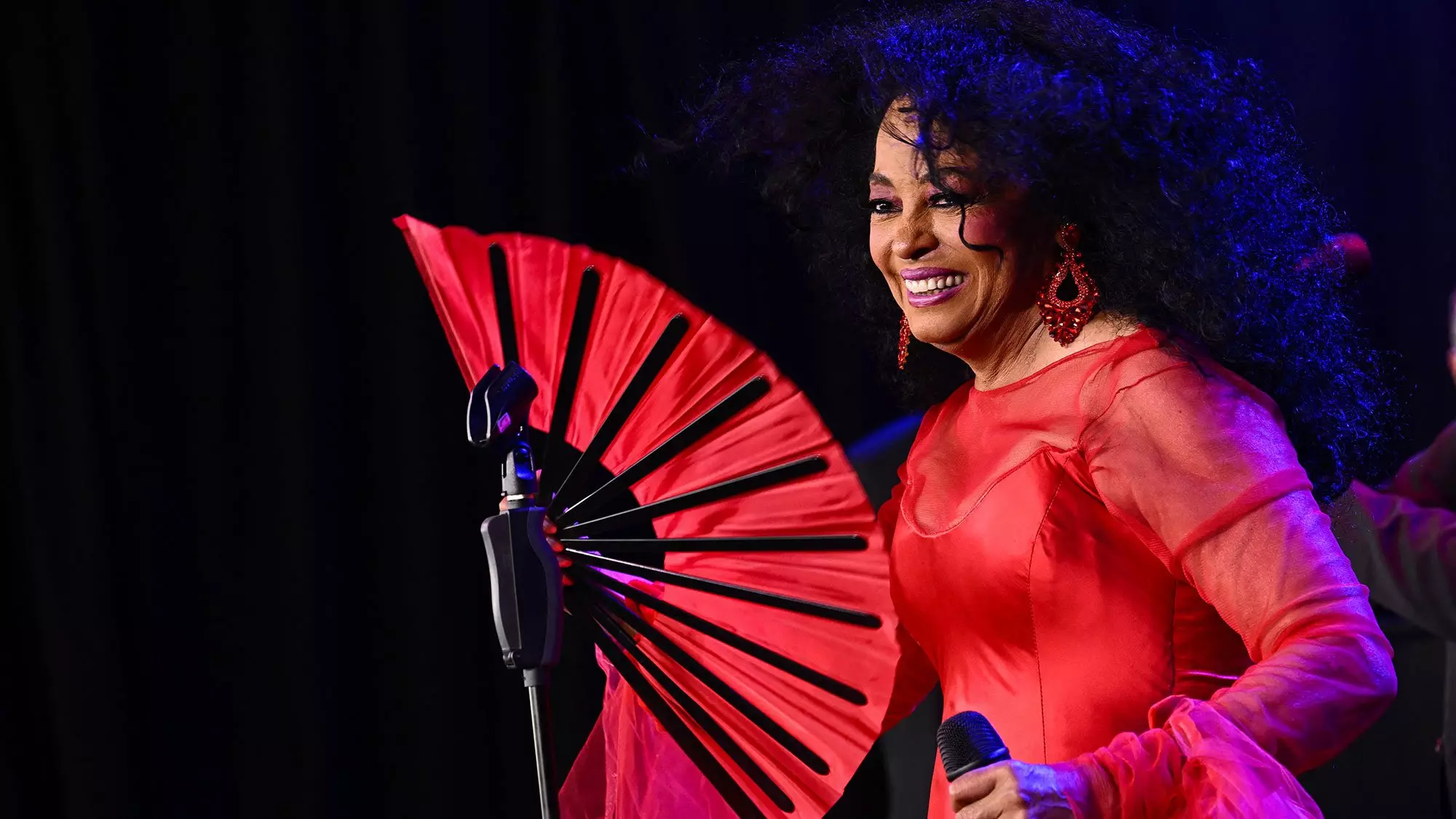
Get Ready For Fool In Love Fest With This Soulful Playlist: Hits & B-Sides From Chaka Khan, Thee Sacred Souls, Smokey Robinson & More
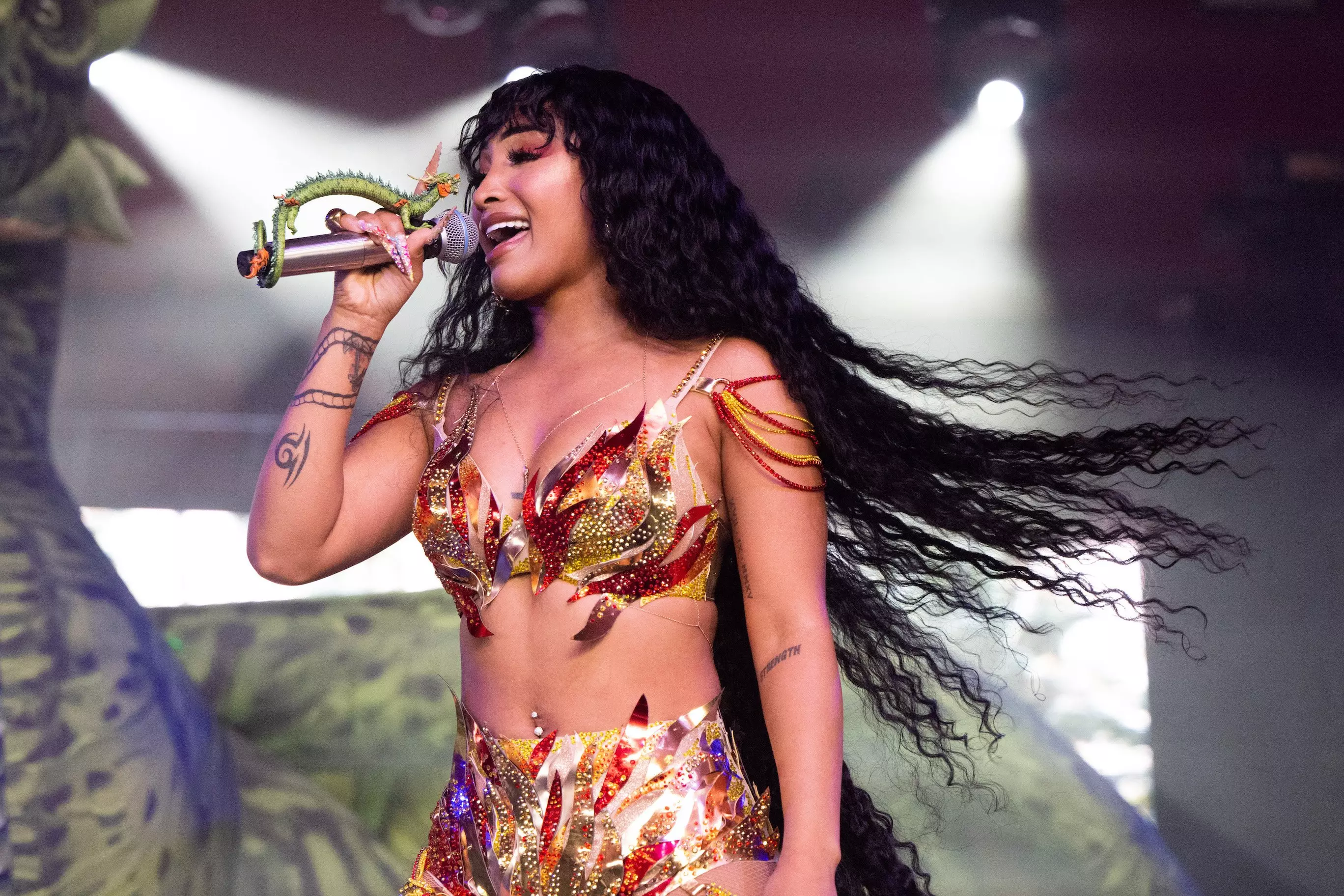
8 Can't-Miss Acts At Afro Nation Detroit 2024: Shenseea, Ayra Starr, Kizz Daniel & More
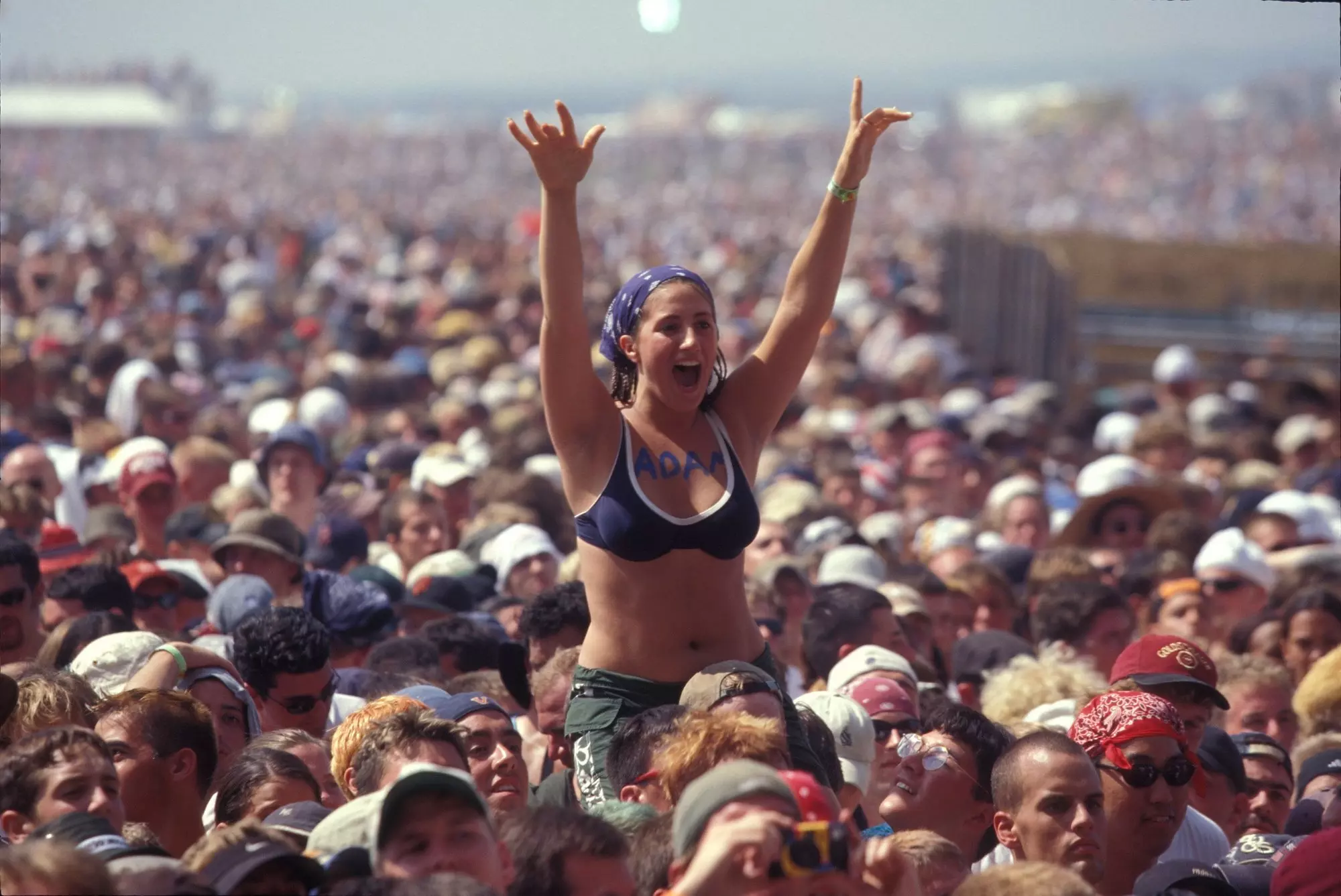
On This Day In Music: Woodstock '94 Begins In Upstate New York
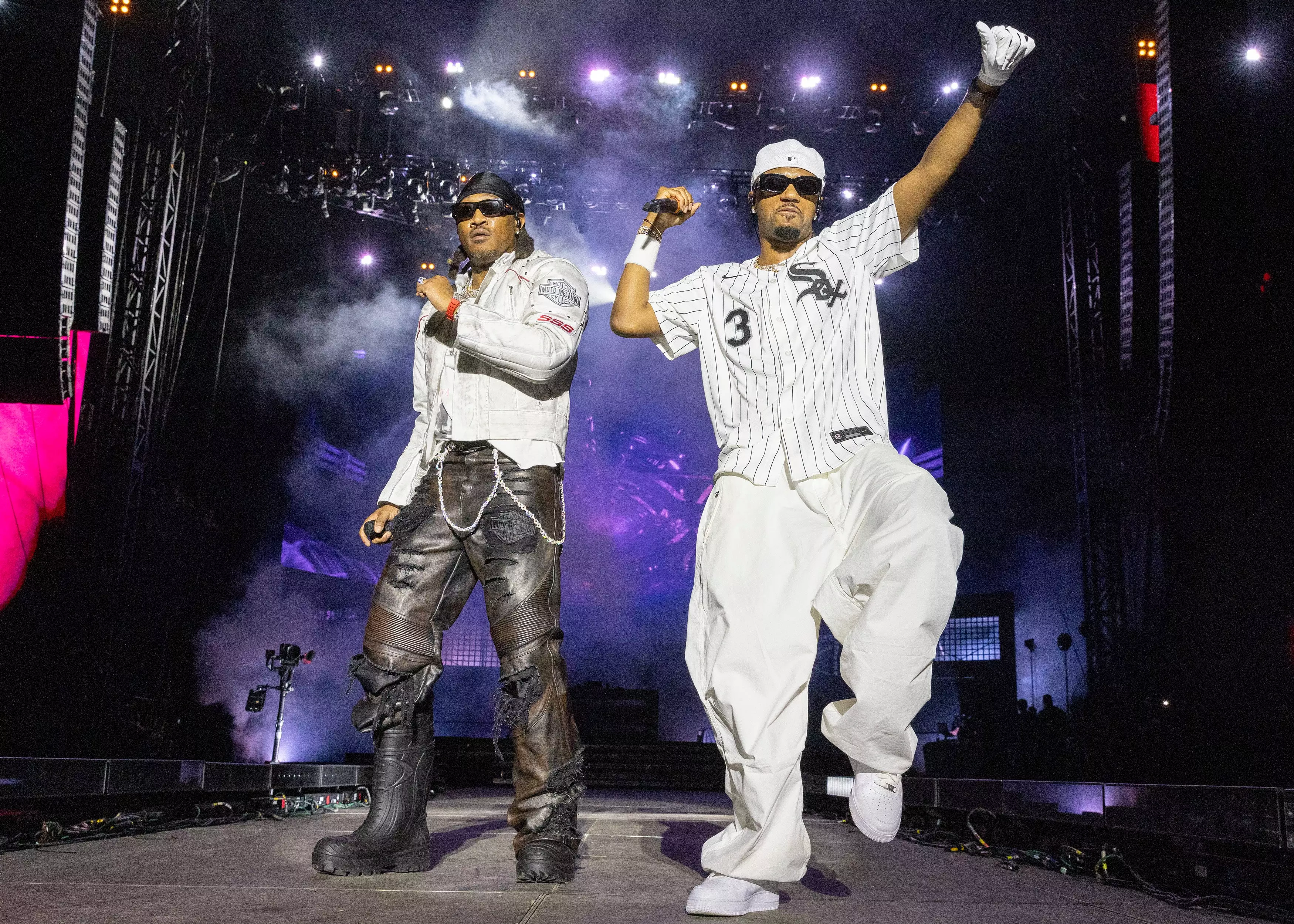
7 Stellar Sets From Lollapalooza 2024: Megan Thee Stallion, Future x Metro Boomin & More

10 Cant-Miss Sets At HARD Summer 2024: Disclosure, Boys Noize, INVT & More
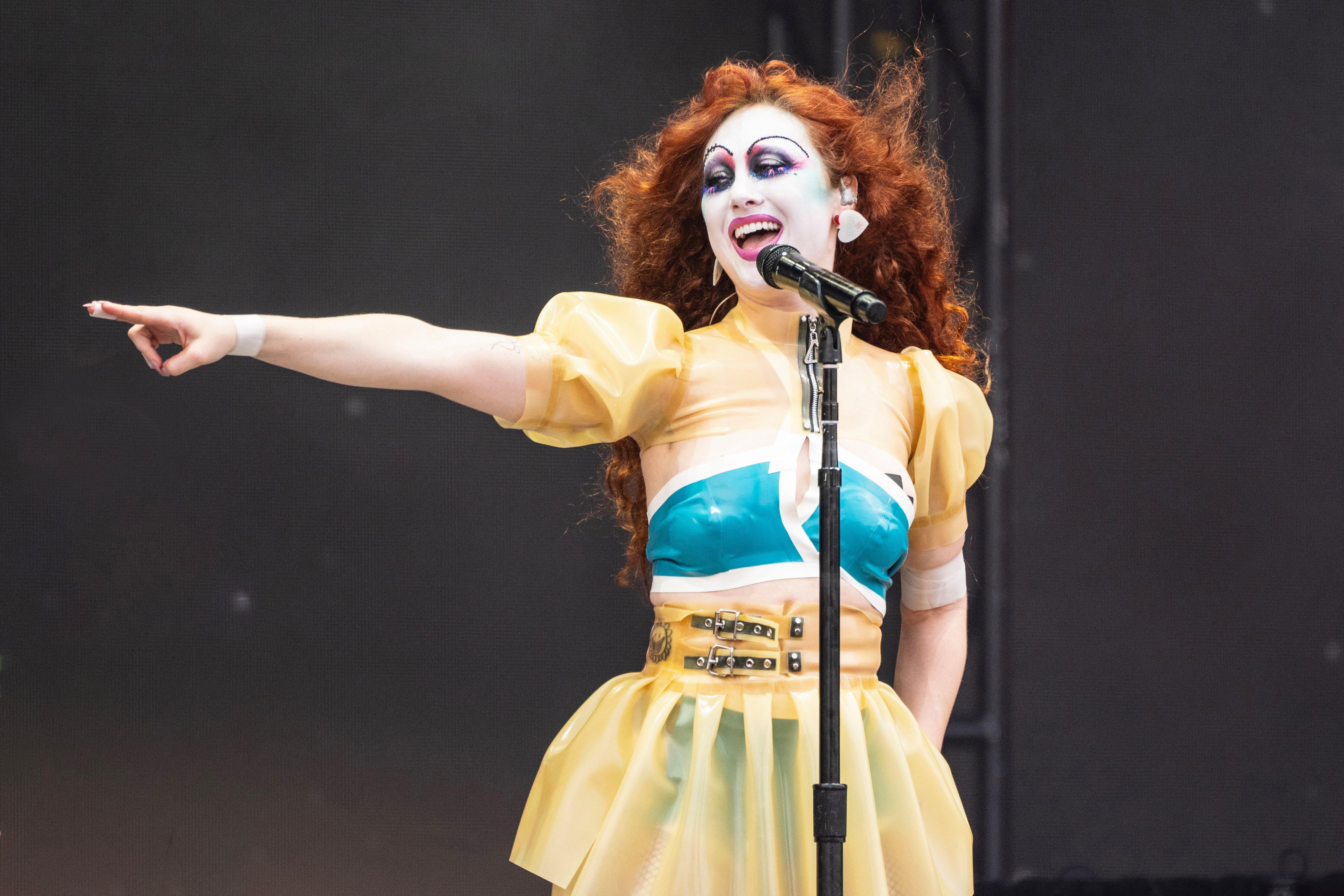
Photo: Erika Goldring
list
5 Artists Who Graduated From GRAMMY Camp: Chappell Roan, Maren Morris, Blu DeTiger & More
As GRAMMY Camp 2024 winds down, check out this list of leading figures in the music community who count themselves as alumni.
GRAMMY Camp is almost a wrap — but the musical memories will last a lifetime. On Saturday, July 19, the weeklong summit for students interested in music careers will wrap after six enlightening days.
Held at the Village Recording Studios in Los Angeles, GRAMMY Camp's faculty of music professionals — along with guest professionals — have offered precious insight to give campers the best chance at succeeding in their career of choice.
The available Camp tracks include Audio Engineering, Electronic Music Production, Songwriting, Music & Media, Music Business, and much more. Many alumni of this enriching crash course have risen to prestigious positions across the musical landscape.
As the Recording Academy signs off on yet another elevating GRAMMY Camp, check out this list of five major artists who cut their teeth at the almost 20-year institution.
Maren Morris
The future country wunderkind attended GRAMMY Camp for its very first iteration, back in 2005. There, the then 15-year-old met undisputed leaders in the music community, like Jimmy Jam and Paul Williams — which set the course for her incredible career to come.
In the years since, Morris has won a GRAMMY, received 17 GRAMMY nominations, and topped the Billboard country charts. She also joined the country supergroup the Highwomen with fellow juggernauts Brandi Carlile, Natalie Hemby and Amanda Shires.
At this year's GRAMMY Camp, Morris returned as a guest artist. What's her advice to budding artists? "Just stick to being authentic," she told RecordingAcademy.com, "and people see that, no matter what time they arrive to the party for you."
Along the way, "Find people that listen to you," Morris added, "but also push you and your creativity to new areas of yourself."
Jahaan Sweet
In 2009 — four years after Morris' GRAMMY camp tutelage — the formidable Jacksonville, Florida, producer, songwriter and pianist Jahaan Sweet attended GRAMMY Camp.
At the outset, he was thrilled to come to L.A. for the first time and network with like-minded folks in music. "I knew that my skill set wasn't that great," he told GRAMMY.com a decade later, "but it was just so good to be around people who were all there to learn and create together.
"I feel like that's the biggest takeback I have of GRAMMY Camp," he continued. "It was amazing to have all those people together under one roof, all in the same vicinity, all doing creative things." Working with GRAMMY Camp Faculty Director Jason Goldman was one clear highlight for him: "He's a great guy, and he was such a good, carefree band director."
By now, Sweet has worked with Kehlani, Kendrick Lamar, Drake, Eminem, the Carters, Ty Dolla $ign, A Boogie Wit Da Hoodie, and many more; he's been nominated for three GRAMMYs and won one. And as a launchpad, GRAMMY Camp helped make all these accomplishments possible.
Watch now: Producer Jahaan Sweet Talks Making Records With Boi-1da, Drake & More | Behind The Board
Chappell Roan
In 2024, Chappell Roan is very, very famous — as she admits, a little more famous than she would like right now.
Regardless, the self-christened "Midwest Princess" — whose moniker was ensconced in the title of her 2024 breakout album — has wholly earned her plaudits, including opening for Olivia Rodrigo on her GUTS tour. And she can trace a line directly back to a decade ago, in 2014, when she attended GRAMMY Camp.
"I didn't do my senior year. I didn't go to prom. I didn't go to graduation," Roan explained to Rolling Stone in 2022, about her early musical life. "I missed a lot of what would have been the end of my childhood to do this job," she says.
For those like Roan, who are dead serious about making the music thing work, GRAMMY Camp is an ideal fount of experience and inspiration.
Read more: Chappell Roan's Big Year: The Midwest Princess Examines How She Became A Pop "Feminomenon"
Jensen McCrae
Another shout out to GRAMMY Camp's Class of 2014: that's the year that indie-folk-pop favorite Jensen McCrae put in her time, at the tender age of 16.
"I started playing and writing music as a little kid, and I've known I've wanted to be creative for my whole life," McCrae told VoyageLA, adding that she began taking songwriting and performing seriously in high school.
"[Being a] half-white, half-Black girl who spent her whole life in academically cutthroat private schools while trying to pursue a career in the arts gives me a unique perspective on the world," she explained. Which made McCrae an live antenna at GRAMMY Camp, picking up signals left and right.
The 10-day experience cemented the Angeleno's desire to attend college at the University of Southern California's Thornton School of Music — where she got a full ride, and was off to the races. These days, she's fresh off an opening slot for Noah Kahan on the We're All Be Here Forever Tour.
Blu DeTiger
"I remember thinking 'So many girls play guitar and sing,'" the TikTok-flourishing bass phenom Blu DeTiger told Spin in 2022. "I was like, 'I want to be different. I want to do something unique.' And I've never looked back."
Part of GRAMMY Camp's message is: dare to be different, to be you. Which made DeTiger an ideal student, when she enrolled in 2015; today, she's leading the charge for a generation of young, innovative bassists of all backgrounds.
Read more: Love Thundercat? Check Out These 5 Contemporary Bassists Keeping The Flame
Along with Morris and New Jerseyan singer/songwriter Jeremy Zucker, DeTiger returned in 2024 as a guest artist — bringing the musical education process full circle, as she continues to redefine how the bass is presented in the social media era of music.
The 20th annual GRAMMY Camp celebration is running now and concludes with the GRAMMY Camp Finale Student Showcase on Saturday, July 20, at the Ray Charles Terrace at the GRAMMY Museum.
Learn more about GRAMMY Camp here — and we'll see you next year in Los Angeles!
Explore GRAMMY Camp And The GRAMMY Museum

20 Live Events At The GRAMMY Museum This September: Experience Orville Peck, Kate Hudson, Tierra Whack & More
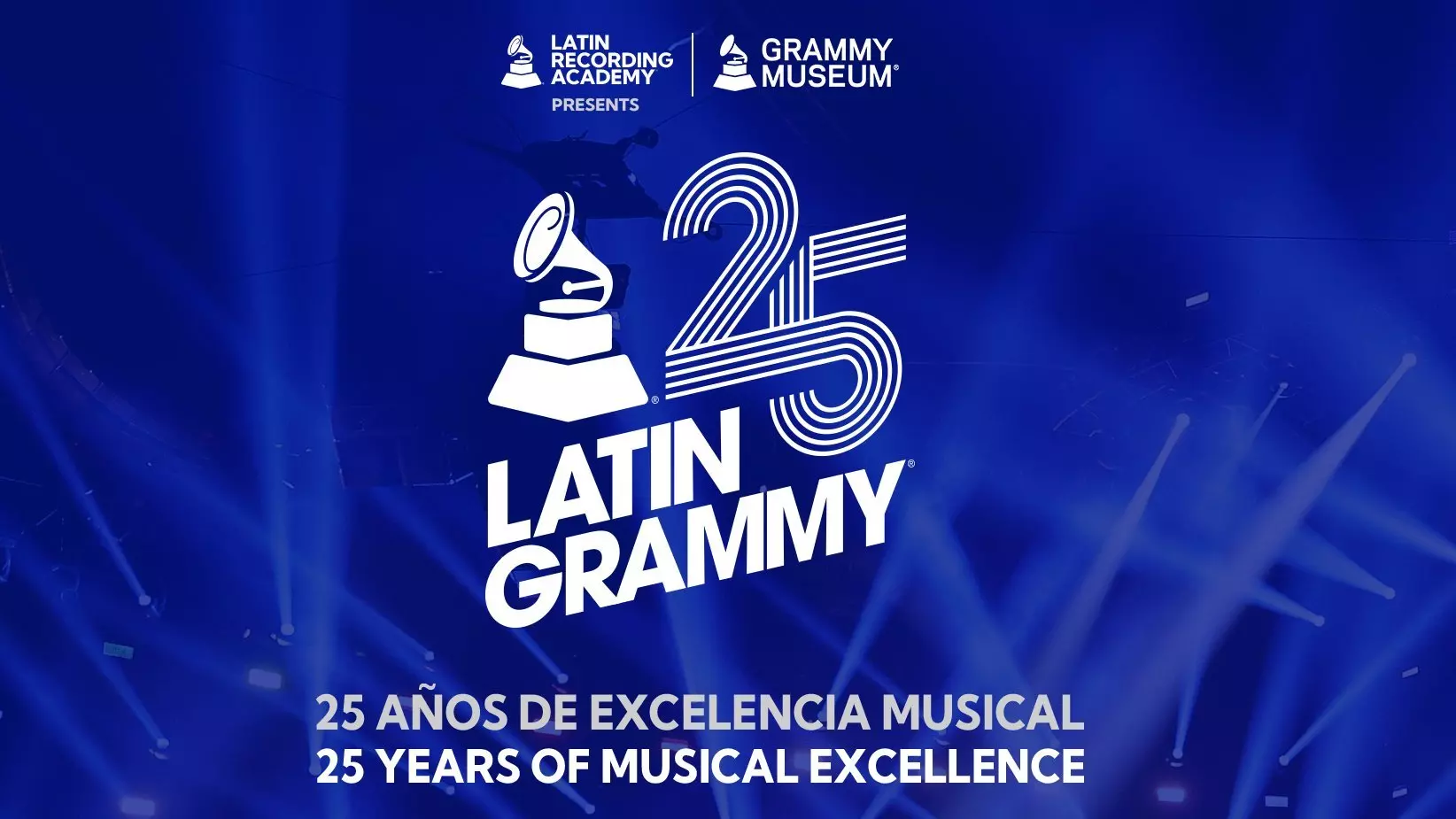
New Latin Recording Academy Exhibits In New York, Los Angeles & Miami To Celebrate The 25th Anniversary Of The Latin GRAMMYs: Launching September 2024
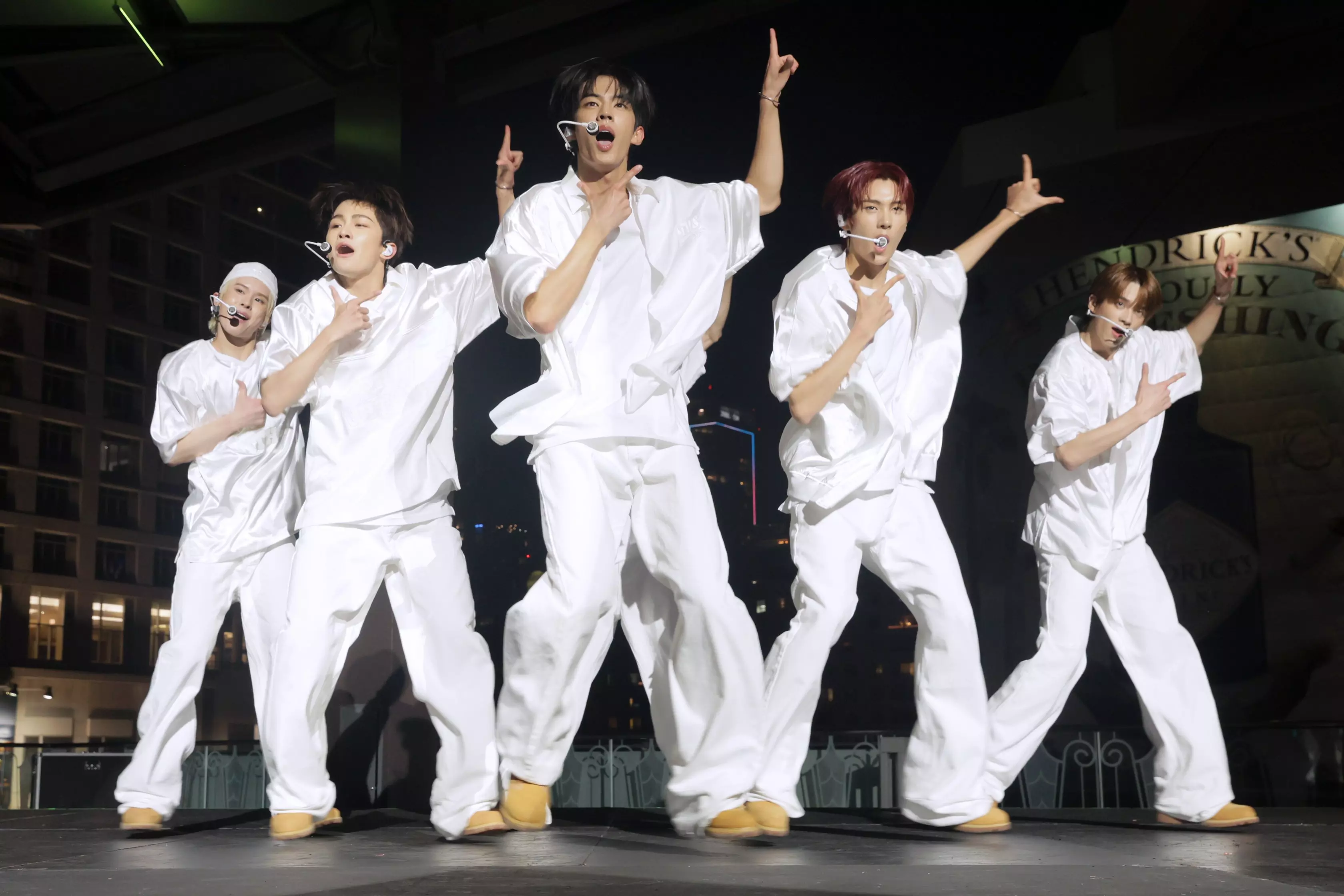
5 Takeaways From The GRAMMY Museum’s "HYBE: We Believe In Music" Exhibit

5 Artists Who Graduated From GRAMMY Camp: Chappell Roan, Maren Morris, Blu DeTiger & More
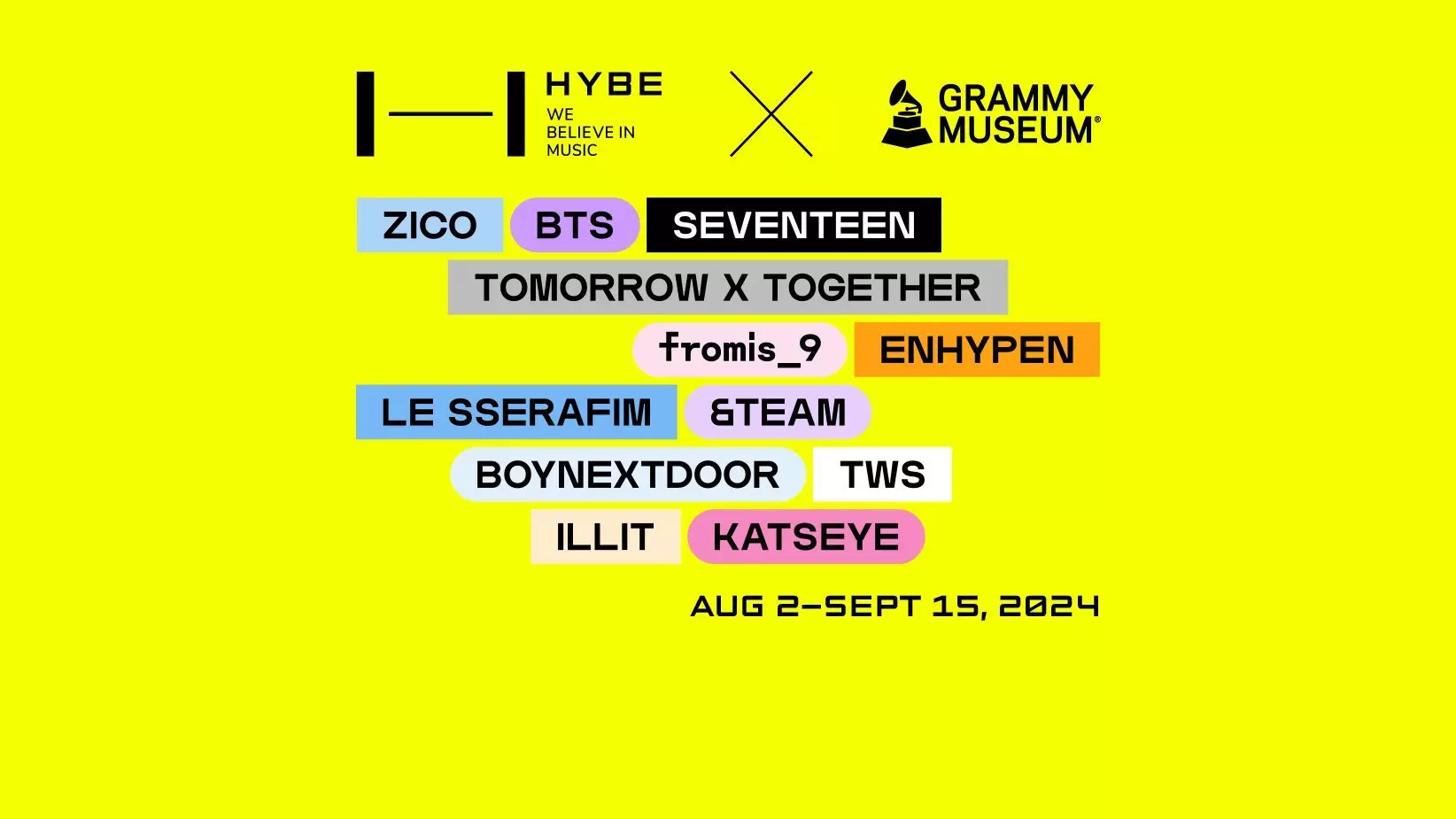
GRAMMY Museum Partners With HYBE For New K-Pop Exhibit 'HYBE: We Believe In Music' Opening Aug. 2
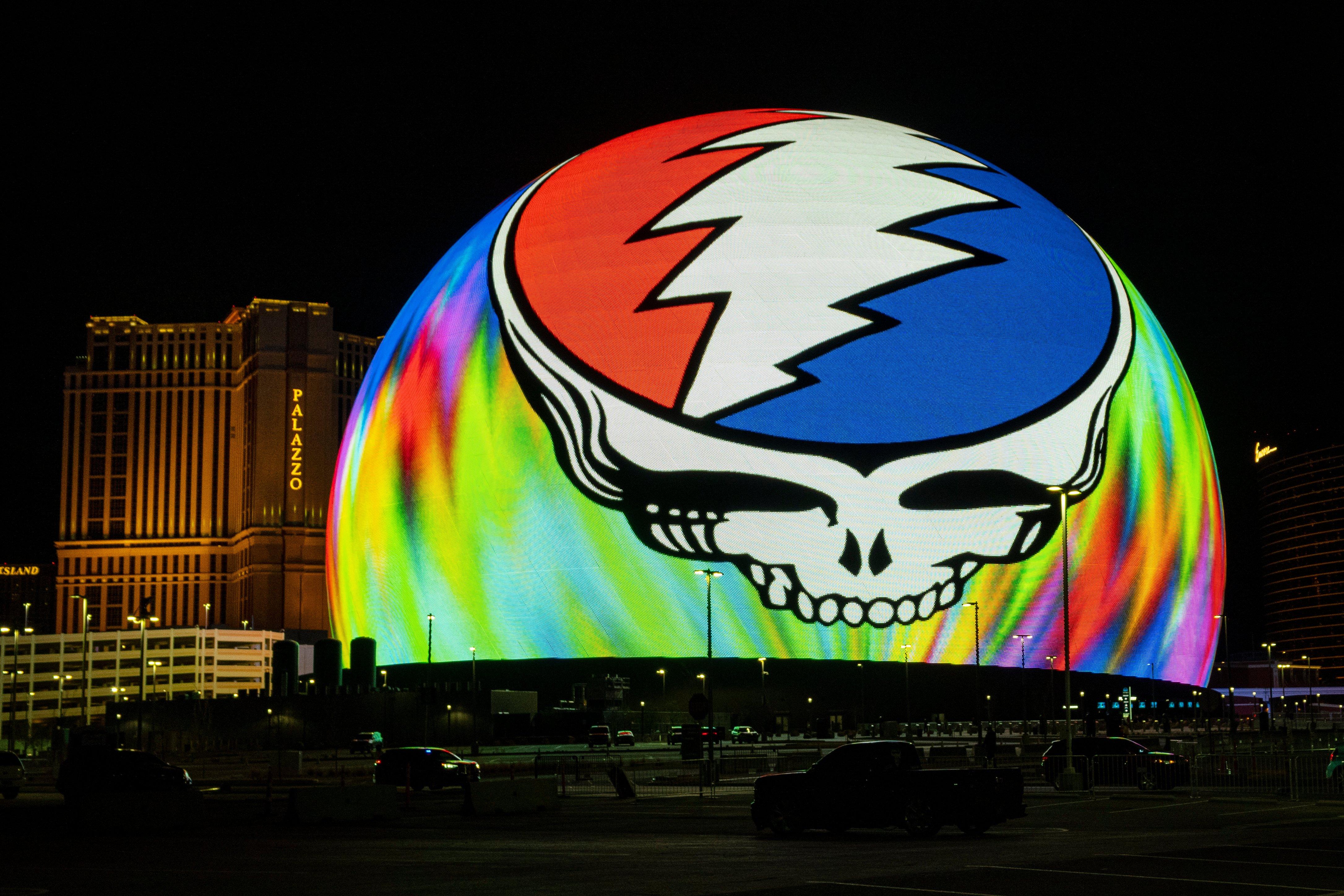
Photo: Kevin Carter
list
Why Dead & Company's Sphere Residency Is The Ultimate Trip
The 30-date Las Vegas residency is an unprecedented look at Dead & Co's live artistry. With stunning visuals and immersive technology, the Dead Forever residency takes attendees on an unpredictable, eye-popping vortex journey.
The scene on Saturday, July 13, was one mostly familiar to Dead & Company fans: Usual suspects Jeff Chimenti on keys, Oteil Burbridge on bass, Mickey Hart on drums, and John Mayer on guitar, a Silver Sky in hand. Grateful Dead co-founder Bob Weir dutifully approached the microphone to deliver one of the Dead’s best-known opening lyrics: "You tell me this town ain’t got no heart."
Throughout the evening, appreciative cheers and whistles sounded at the first notes of a classic, like this one, intermingling with the hints of marijuana in the air. The crowd of thousands, who’d traveled from both near and far for the occasion, swayed to the music. Largely clad in the tie-dye t-shirts customary to the Dead fandom, they comprised a vivid sea of color, visible even in the venue’s dimmest lighting.
Bathed in the glow of a key anomaly — a 160,000-square-foot curved LED canvas — a Deadhead sitting in the row ahead of me turns around and asks if I’m enjoying the show (I am). When I return the question, he is emphatic, his response succinct: "it’s transformative."
He’s not wrong in that the audiovisual spectacle — which wrapped its eighth of 10 weeks this past weekend — metamorphoses Dead & Company’s concert format. Since it debuted in May, the now 30-date Las Vegas residency, dubbed Dead Forever, has attracted old-school and new-generation Deadheads, as well as curious first-timers. From one-of-a-kind production tools, like its 16K LED display (the highest-resolution display in the world, per developers) and stereographic projection, Sphere has empowered Dead & Company to carry forth the legacy of one of the most fervently-loved bands in American music history, with unprecedented storytelling capacities and complete creative control.
Read on for four reasons why Dead & Company’s residency at Las Vegas’ most-talked-about venue is the rock outfit like they’ve never been seen before.
The Meeting Of Music & Visuals Allows For True Narration
For the nearly four hours that Dead & Company play each Thursday, Friday, and Saturday of a residency week, the domed venue adjacent to the Venetian transforms from Sphere to spaceship. Narratively, the show is stylized as a long, strange trip through space that issues nods to the Grateful Dead’s history.
It’s only fitting that this story begins in San Francisco, where the Dead’s townhouse in the heart of the Haight-Ashbury district becomes the focal point of the audiovisual journey’s intro. The 360-degree view of the Dead’s residence and the larger row of townhouses to which it belongs pans to a drone shot of the Bay Area at golden hour and soon thereafter, outer space.
Visually, attendees travel through time and space in an unpredictable, eye-popping vortex of fantasticality (and sometimes, reality). Take, for example, the segment that recreates the Dead’s performance at the Great Pyramid in Giza, Egypt. The scene is punctuated by black bats that flap swiftly through the desert landscape — a detail that comes as a surprise to those in the audience, and one ultimately added based on Weir’s recollection of this very phenomenon during the 1978 event, Mayer tells GQ.
Before Dead & Company bring Dead Forever full-circle by returning to 710 Ashbury Street at the show’s close, the show winds through a colorful, circuitous run of visuals: the Dead’s iconic technicolor dancing bears, Cornell University’s Barton Hall, and a wall made entirely of digital reproductions of Dead event posters and hard tickets. The show’s depth of reference is plunging, and Sphere’s technology allows the story to play like an abstract movie that blurs timelines, affording Dead & Company an unusual and nonpareil opportunity to leverage live storytelling in a way they’ve never before been able to.
While Dead Forever is accessible purely as a visual marvel, for the initiated, it is rife with Easter eggs. Its historical allusions are familiar touch points for the Deadheads who hopped on the metaphorical bandwagon back when Jerry Garcia was at its helm. Although some of its segments will evade those less fluent in the Dead’s storied past, they can nevertheless serve as educational gateways to it (and to greater, deeper fandom) for those who leave the show wanting to learn more.
Read more: A Beginner’s Guide To The Grateful Dead: 5 Ways To Get Into The Legendary Jam Band
In A Way, Everything Is New
Whether one has seen Dead & Company once, five times, 20 times, or never before matters not, for Dead Forever is a brand-new show. Familiarity with the Grateful Dead’s legacy and its contemporary offshoot's genesis certainly enriches the overall experience, but it’s not a requisite to enjoy the show, making the residency a particularly good entry point for the Dead & Company-curious who may have missed them on The Final Tour in 2023.
Dead Forever levels the playing field for attendees in that, apart from the songs on the setlist, the residency represents net-new material. The marriage of music and visuals makes each of the 18 tunes new from the standpoint of an audiovisual experience, and the novelty of Dead Forever deepens for even the most experienced Deadhead.
"When I was growing up, ‘Drums’ was always my bathroom song, but now you don’t want to miss it," an attendee tells GRAMMY.com at the end of the first set (Dead & Company play one six- or seven-song set and take a 30-minute intermission before beginning the evening’s second and final set).
A customary part of the Dead’s sets, "Drums/Space" is an extended percussion segment that takes on new life in Dead Forever. Led by Mickey Hart, the set two standout is where sound evolves into physical feeling. As this portion of the show starts, the curved LED canvas swirls with images of different drums that move wildly as Hart and Jay Lane (who stands in for Grateful Dead co-founding member, Bill Kreutzmann) diligently drum, steadily increasing the pace and intensity with which they do so. The instruments that grace Sphere’s screen are Hart’s own, the drummer tells Variety. Following 3D-photographing that enables them to be displayed in this fashion, an ensemble of at least 10 different drums joins the visual jamboree.
The cinematic, multisensory nature of this segment grows increasingly climactic, with the percussion becoming so thunderous it becomes physical. No surprise, considering Sphere’s immersive, crystal-clear sound system, or the fact that 10,000 of the venue’s 17,385 seats are haptic seats that can vibrate in time with the mounting percussion. This technology transforms "Drums/Space" and allows a customary piece of the Dead’s traditional sets to be heard, seen, and felt anew.
The Environment Is Unusually Immersive —And Intimate
Upon mention of Sphere’s size — the globe measures 875,000 square feet and can accommodate up to 20,000 people — "intimate" is not the first word to come to mind. Still, the venue felt remarkably intimate during Dead & Company’s final performance of July.
This was owed in equal parts to its self-contained design and its immersive visual environment, in which Sphere’s LED screen wraps over and behind the audience. However uncannily, the latter contributes to a sense of closeness, creating the illusion that Sphere, its visual displays, and its audience are situated much more closely than they actually are.
Its 580,000-square-feet of LEDs, coupled with its 360-degree shape and structure, render Sphere the most immersive live music venue in the world. To that end, it’s not hyperbolic or unreasonable to call Dead Forever Dead & Company’s most immersive live venture yet.
Of course, the Dead Forever narrative — a trip through space undertaken together, as one community — only adds to the show’s combined sense of intimacy and immersion.
No Show Is The Same
It’s not out of character for Dead & Company to play no repeats across consecutive evenings (as they did at San Francisco’s Oracle Park, where they laid their touring career to rest last July), and Dead Forever is no exception. Apart from "Drums/Space" — the sole item on the setlist that recurs each night — the 17 other songs that the band will play and their visual accompaniments are left to Dead & Company’s whim.
"What’s become really interesting — and I would say it’s a challenge, but it’s a really fun one — is that not only do you have to make the songs work in some kind of a flow for the setlist, but every piece of content has maybe eight or 10 songs that can go with it," Mayer told Variety.
No show is the same, yielding similar but unique viewing experiences across a given residency weekend and, more broadly, the portfolio of Dead Forever shows performed to date. This aspect has enticed avid fans to return not once, not twice, but three times in a given weekend, to see a fuller scope of what Dead Forever has to offer across its many possible variations.
With the residency’s July run now in the rearview, Dead & Company will take a brief break before returning to Sphere Aug. 1-3 and 8-10 for the final Dead Forever trips — for now.
Explore The World Of Rock
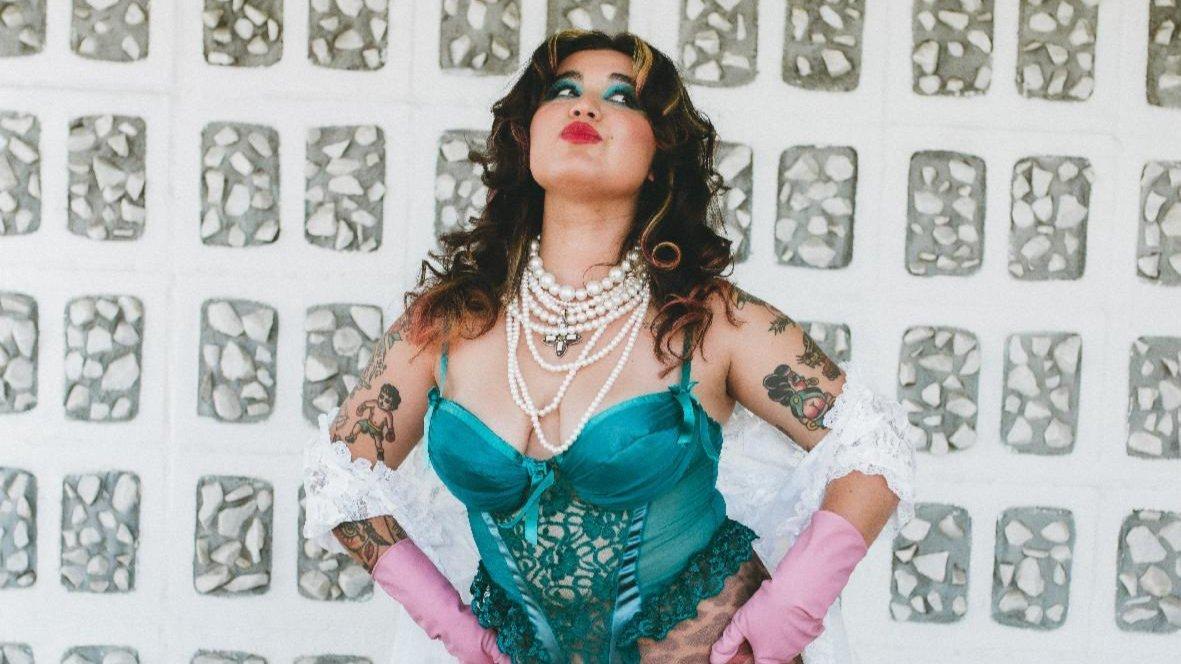
Photo: Ragan Henderson
interview
On New Album 'Big Ideas,' Remi Wolf Delivers Musical Poetry In Motion
Alt-pop favorite Remi Wolf took inventory of her psychological state while on "back-to-back-to-back" tours, and the result is a winning second album: 'Big Ideas.'
How can you write a song, when you have nothing to sing about? One trusty well to return to is life on the road; the musical canon is filled with odes to whizzing highway dividers, beds in strange places and, on occasion, a deteriorating home life.
The buzzy and prolific singer/songwriter Remi Wolf just folded these experiences into Big Ideas — her second full-length album, and one born of perpetual travel, transit and transition. (And, it should be said: her Carmen Sandiego traversals led her to NYC’s 2024 GRAMMY U Conference.)
"Well into my 20s, it was like a second puberty, because essentially, I was reborn as this touring musician," the thoughtful and loquacious indie-popper tells GRAMMY.com, over Zoom from her rehearsal space. (Even then, she's in motion, ducking from room to room to evade clamorous comings and goings.)
She evokes her breakout 2021 debut album: "I'd never toured like that before. My whole entire life felt so new after Juno was released."
This led to a white-hot writing streak. Big Ideas' highlights, like advance singles "Toro" and "Alone in Miami," directly address change and upheaval. Goes the former: "Dancing around and spilling wine/ You look good in my hotel robe." Goes the latter: "Met up with Maine, bought cocaine/ Clothes in the lobby waiting for me."
"There's no frills in that s—," Wolf says. "They're quite literally about real life." Read on for a full interview with Wolf about Big Ideas — a locus of that life, in all its nuances and dimensions.
This interview has been edited for clarity.
I love how funky and rhythmic 'Big Ideas' is. Which rhythms from the musical canon got you going? Are you a Purdie head? A Dan head?
Oh, all of the above. I love a Purdie shuffle. The Purdie shuffle is a pretty legendary groove. I'm a huge fan of Steely Dan. I went to music college; I feel like as a music school student, you kind of have to love Steely Dan. Well, some of the kids choose to hate them, but I chose to love them.
But yeah, I love a funky groove, a funky beat. I also like simple s—, but we love syncopation in this household.
What'd you grow up listening to on that front?
Honestly, not much. I feel like as a young kid, I would just listen to what my parents were listening to, and my dad listened to a lot of '80s classic rock, and my mom really liked Prince.
And then, also, my first album I ever owned was Speak Now by Lindsay Lohan, which is a completely different direction, and I was about eight when I got that album.
I didn't know she made music.
She had a music career. It was brief, but it was mighty, truly. She had all the best songwriters in the industry at the time working on this album. So honestly, even though it wasn't the pinnacle of musicianship, the writing was really good. Great songs.
I just flashed back to Hilary Duff jewel cases in grade school.
Oh, yeah, that's another classic, but I was a little bit more alternative than that. Lindsay Lohan was kind of on more of a pop-punk, like emo front-facing type of songwriting and energy. A little bit more like Alanis Morissette vibes.
If I ever encounter a Lohan song in the wild, I'll remember your recommendation.
When I was a high schooler, that's kind of when I started really listening to a bunch of staff that wasn't playing in my house. And that's when I got into Stevie Wonder and the Beatles and Cake.
I ride for Cake. Great band.
I ride for Cake, too. Honestly, they're one of my favorite bands of all time. I don't know, I feel super similar to them sometimes. Their lyrics are so wacky and sad, kind of — and bizarre, but they're so funky, and the songs are just great, but they're weird.
Take the readers through the span of time between your first album, 'Juno,' up to this sophomore album. What seed was planted?
I released Juno at the end of 2021, and I guess the seed that was birthed after that was that I've essentially been on tour ever since.
This new album, Big Ideas, is kind of the product of: I would go out on tour and come home for a week at a time, because I was on back-to-back-to-back tours. I went on 10 tours in one year; I was only home for about six weeks of all of 2022. And then, going into 2023, I kept touring, and kept doing the same thing.
Watch: GRAMMY Museum Spotlight: Remi Wolf
This album is a collection of all these moments and memories, and getting really focused, short amounts of time with me getting home and kind of exploding songwriting-wise — then, going back on tour and building up s— to talk about, and then exploding once again.
There were about five concentrated week-and-a-half to two-week-long periods of writing that became this album.
Do you get a charge out of touring? I couldn't imagine doing it again.
Yeah. I think that there is an adrenaline that I like about it. I like traveling. I like seeing different cities, even if it's for a couple hours. I really like that.
I like the communal aspect of it. I like getting really close to people and having a routine, to be honest. It's the most routine time of my life. Other than that, when I'm home, I'm just all over the place and doing a bunch of s—, which also has its perks.
But I don't know, there's something about waking up and doing the same thing every day that kind of is nice for me. And it's cool to be able to just focus on one thing, getting to the next city and playing the show and making people happy.
What about your life disappearing temporarily? Leaving a partner, your houseplants…
No, that's really difficult. I luckily don't have a partner right now, but I think that tour is really capable of ruining a lot of relationships, unless you've got a really strong one where they understand the lifestyle and everything. But I've had many houseplants die. It's actually really sad.
Your life just kind of is on pause. It's like a time machine, or a time capsule. Especially living in L.A. where the weather's the same every single day, you come home, and it's exactly the same as when you left the city.
Once the emotional and conceptual pieces were on the floor, how did you assemble 'Big Ideas?'
There are so many iterations of what it could have been. Because like I said, I had five two-week long sections of writing a f— ton of songs. And I'm not kidding, I wrote full albums within those weeks. I would be hunkered.
I had one week in L.A. where it was five days, and we wrote 10 songs. And then I had another week in L.A. We wrote seven songs. And I had another week in New York, and we wrote nine songs. And then another week in New York, and we wrote 12 songs. And then another week finally back in L.A., and we wrote four songs that time.
But essentially, I was kind of just doing what felt right. Until I felt like we had an entire album that was cohesive but expansive in its palette, I kept writing. And then finally, at a certain point, I was like, OK, I feel like we have the record.
But there were moments where I was like, oh, I just wrote an album. I don't have to do anything else. And then a month would go by and I'd be like, I need to do more.
In terms of choosing the songs, I think I was drawn to the songs that felt the most real to me — that continued to feel the most exciting and real to me.
Define "real" in this context.
That is a very difficult question to answer, and I think it is such a gut thing. It's beyond language. I don't know how to describe that. I don't know. If I feel invested. There are certain songs that you write and you like them, but you don't have that same feeling of investment in them.
Does this really need to be heard? Does anybody need this?
Yeah. Or: Do I need this? Honestly, it's so inexplicable.
Do you ever try to work the songwriting muscle of making something specific, universal? Is that part of your calculus?
Typically, it's not, but there's one song that I tried to do it on very intentionally: "Soup."
[I had] the intention of making it a song that was built for an arena in terms of the sonics and the expansiveness of the drums and the four-on-the-floor. In my head, I was like, OK, I want this song to play, and then you see the arena with the people pumping their fists and feet.
I think I'd recently seen Coldplay at Wembley Stadium, and I was like, Holy s—, this is so wild. Their stuff is so arena, stadium-bound. I was inspired by essentially the four-on-the-floor feel — hearing the reverb in the rafters of an arena like that.
Going into writing that song, I was like, this is the song where it would make sense for me to be blunt and universal with my lyrics. And I think it was a cool experiment and honestly quite vulnerable for me, because I think sometimes I shy away from that type of lyric writing, whether it be out of just wanting to be a little bit more artsy.
Sometimes I think it's fear-based, in the sense of: I want to hide, I want to be able to be the only one to really know what I'm talking about sometimes. And I think with "Soup," I kind of just let it fly and let that universality shine through a little bit more.
You don't need to know what songs mean all the time. You mentioned the Beatles: John sang, "Yellow matter custard, dripping from a dead dog's eye."
Yeah. It's syllables, and imagery. This s— can be anything you want to be, and I always try to remember that.
What's coming up in your musical life?
I'm going on tour in the fall; today is our first day of rehearsals. We're starting to put together a big show. More travel, more motion. I never stop moving, essentially. Hopefully I'll be writing more soon.




